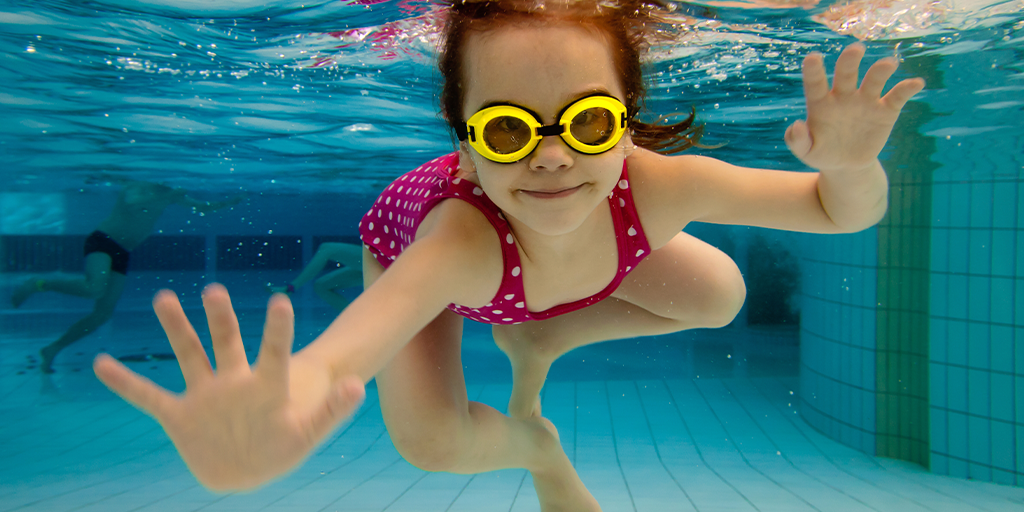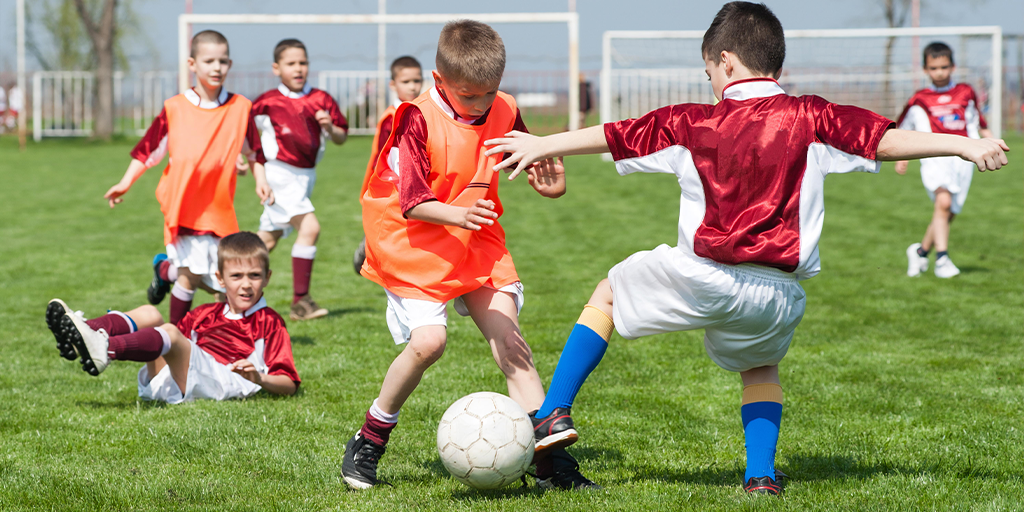As parents, we all want the best for our children, and introducing them to sports can be a fantastic way to enhance their development. Not only do sports offer a fun way for kids to stay active, but they also foster social skills, teamwork, and discipline. Understanding when and how to introduce sports is crucial to ensuring a positive experience that aligns with your child’s developmental stage and interests.

The Benefits of Early Sports Involvement
Introducing your child to sports at an early age comes with a plethora of advantages that extend far beyond the playing field. Engaging in sports helps children develop essential physical capabilities such as gross and fine motor skills, which are the building blocks for more complex movements as they grow. These activities encourage the development of coordination and balance, helping young children master everything from running and jumping to throwing and catching with greater ease.
Moreover, sports are a fantastic way to cultivate social skills and teamwork. Participating in team activities teaches children how to cooperate with peers, share victories and challenges, and understand the dynamics of working together toward a common goal. These experiences are invaluable as they lay the groundwork for interpersonal skills that are applicable throughout life, from the classroom to the boardroom.
Mentally, sports demand a degree of focus and discipline that can benefit young minds. Learning to pay attention to instructions, follow game rules, and practice patience are aspects that sports uniquely foster. This discipline often translates to better concentration in school tasks and other activities that require sustained mental effort.
Emotionally, the role of sports in building self-esteem and confidence cannot be overstated. Each game or practice is an opportunity for children to set personal goals, whether it’s improving their fastest running time, mastering a new swimming stroke, or simply being able to hit a ball with a bat. Achieving these goals provides a sense of accomplishment and pride. Furthermore, sports teach resilience and the ability to bounce back from disappointment—important emotional coping skills for handling life’s ups and downs.
And we can’t skip the fact that sports instill a sense of belonging and community. Being part of a team or even participating in individual sports within a supportive group provides a sense of inclusion and collective identity. This is particularly important in early childhood when the foundations of social identity are formed. Hell, it’s important in adulthood, too.
By integrating sports into their routine, children not only enhance their physical health but also enrich their emotional and social well-being, setting the stage for a balanced and active lifestyle. Encouraging your child to engage in sports is thus not just about physical activity; it’s about providing them with a toolkit for holistic health and personal development.
Popular Sports for Kids in the USA
Not sure which sport to start with? There’s a ton, so don’t feel too overwhelmed. Here are some of the most popular sports that kids play in the United States:
Soccer
Soccer is one of the most popular team sports for children in the USA. It’s loved for its fast-paced action and the minimal equipment required, making it accessible to many families. Parents appreciate the focus on teamwork and endurance, while kids enjoy the thrill of running and the joy of scoring goals.
Basketball
Basketball captures the hearts of many young athletes with its dynamic pace and exciting gameplay. It helps kids develop coordination, quick thinking, and teamwork skills. The sport’s popularity is boosted by its indoor playability and the influence of NBA and WNBA stars.
Baseball/Softball
Known as America’s pastime, baseball is cherished for its rich history and the strategic depth it offers. It teaches children patience, precision, and the importance of individual roles within a team setting. Families enjoy baseball for its community feel and the tradition of enjoying games together, whether playing or watching.
Football
American football is immensely popular due to its blend of strategic gameplay and physical challenge. It requires and develops resilience, discipline, and teamwork. Parents and kids alike are drawn to the excitement of the game and the sense of community and school spirit that surrounds high school and college football.
Gymnastics
Gymnastics is favored for its display of strength, flexibility, and discipline. It allows children to build a strong foundation of physical skills and confidence that can benefit them in numerous other sports and activities. Parents value gymnastics for the focus it requires and the grace it develops in young athletes.
Swimming
Swimming is a favorite for its health benefits and life-saving skills it teaches. It is a low-impact sport that enhances cardiovascular fitness and muscle strength without stressing young joints. Kids love being in the water, and parents appreciate the safety skills their children gain.
Tennis
Tennis is celebrated for combining physical fitness with mental agility and social interaction. It’s a sport that can be started at a very young age and played for a lifetime, offering continuous development opportunities. Both kids and parents enjoy tennis for its individual nature, allowing players to progress at their own pace, and for the lifelong friendships formed on the court.
Track and Field
Track and field encompasses a variety of events that cater to different strengths, making it inclusive for diverse athletic abilities. Kids can participate in sprints, jumps, throws, and distance running, each developing different physical and mental aspects. Parents appreciate track and field for teaching kids about personal goal setting and self-improvement. And it’s great if your kiddo loves to run around but isn’t as hot at catching and hitting or shooting the ball into the hoop.
Appropriate Sports by Age Group
The right age to start sports can vary based on the sport and the child’s readiness, both physically and emotionally. Here’s a simplified breakdown:
- Ages 2 to 5: Focus on unstructured play and simple, fun activities that build basic motor skills and coordination, such as tumbling, swimming, or basic ball games.
- Ages 6 to 9: Children are typically ready for more structured team sports that introduce basic rules of play and teamwork, such as soccer, T-ball, or gymnastics.
- Ages 10 and up: Kids can handle more complex sports that require strategic thinking and advanced skills, and may begin to participate in more competitive play.

Starting Competitive Sports
While sports can be introduced at an early age through fun and games, competitive sports require a higher level of commitment and maturity. Most experts agree that competitive sports are best suited for children over the age of eight. This allows children to develop a solid foundation in basic skills and understand the essence of sportsmanship before introducing the pressures of competition.
Keeping Sports Fun and Balanced
It’s essential to keep sports fun and not let them overshadow other important aspects of childhood. Encourage your child to try different sports to find the ones they truly enjoy, rather than pushing them into highly competitive areas too soon. Balance is key—sports should be just one part of a well-rounded childhood that includes academics, leisure, and family time. Most importantly, at these young ages, you’re teaching your kids to love exercise, sports, and team concepts. It’s not as much about winning as it is having fun.
Listen to Your Child
The most important factor is your child’s interest and enjoyment. If they love what they’re doing, they’re more likely to stick with it and excel. Regularly check in with them to ensure they are enjoying the activities and not feeling overwhelmed by the competition or practice schedules. If a sport is causing more stress than happiness, maybe it’s time to try something else.
Safety and Health First
Ensuring the safety and health of your child as they participate in sports is paramount. Here are key considerations to keep your young athlete safe, healthy, and thriving in their sporting endeavors:
Appropriate Gear and Equipment
Every sport has its own specific requirements for equipment and attire that help protect against injuries. For instance, helmets are essential for cycling, shin guards are crucial for soccer, and the right type of shoes can make a significant difference in sports like basketball or running. Invest in high-quality, properly fitting gear that meets safety standards. This not only protects your kiddo but also boosts their confidence and performance.
Adequate Rest and Recovery
Children’s bodies are still developing, and adequate rest is crucial to their physical health and overall growth. Ensure that your young little athlete gets enough sleep each night to recover from the day’s activities. Additionally, rest days are essential to prevent overuse injuries. These days allow the body to repair and strengthen, especially after intense practice sessions or games.
Proper Nutrition
Fueling your child’s body with the right nutrients is vital for their energy levels and performance in sports. A balanced diet rich in fruits, vegetables, proteins, and whole grains provides the energy they need to play and the building blocks for growth and repair. Hydration is equally important, especially before, during, and after physical activity to prevent dehydration, which can impair their ability to perform and lead to more serious health issues.
Recognizing and Addressing Burnout and Overuse Injuries
Children are often enthusiastic about pushing their limits, but this can sometimes lead to burnout and overuse injuries, which are particularly common in sports that involve repetitive motions, such as swimming or baseball. Be vigilant for signs of burnout, which can include chronic muscle or joint pain, fatigue, or a drop in performance. Emotional burnout should also be monitored, manifesting as a lack of enthusiasm for a sport they once loved, moodiness, or irritability.
Encourage open communication with your child about how they feel physically and emotionally.
Creating a Balanced Schedule
Avoid overscheduling your child with too many sports commitments, which can lead to physical exhaustion and emotional overwhelm. Balance their sports schedule with their academic responsibilities and free time to just be a kid. This balance is crucial for their overall development and ensures they can enjoy the benefits of sports without it becoming a detrimental pressure.
By prioritizing safety, health, and well-being, you can help your child enjoy the many benefits of sports while minimizing the risks. This approach not only supports their development as young athletes but also instills habits and values that will serve them throughout life.
Conclusion
Introducing your child to sports should be a thoughtful, deliberate process that aligns with their interests and developmental stage. Each child is unique, and what works for one may not work for another. By providing a supportive environment that values fun and personal growth over competition, you can help foster a lifelong love of sports.
For more detailed advice tailored to your child’s interests and age, or to explore suitable programs, feel free to reach out to sports educators or pediatric sports specialists. Let’s give our children the gift of active, happy, and healthy lives through sports!

